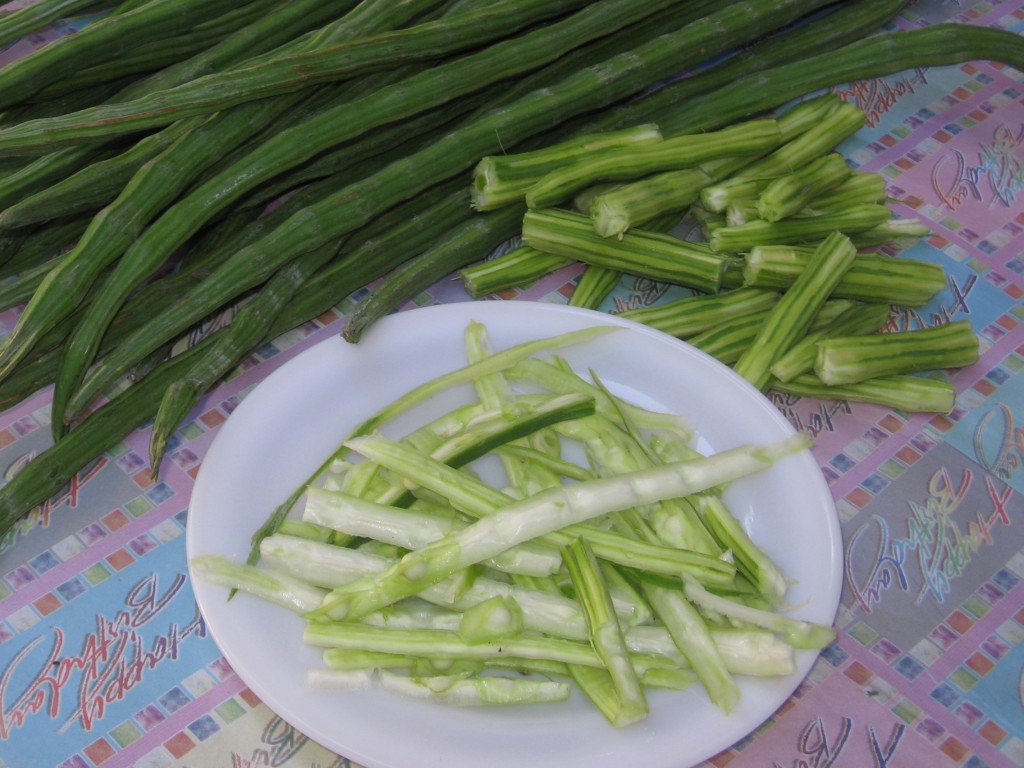Malunggay/Moringa

Malunggay/ moringa (Moringa Oleifera) is also known as horseradish tree because the roots taste just like horseradish. It is also called drumstick tree because the fruit or bean pod is long. The fruit is segmented in a triangle and has lot of seeds inside. In the Philippines, we used the fruit or beans as vegetable. As you see in the picture, the pods can be prepared two ways, one is by removing the meat from the hard skin and the other is by removing parts of the skin and then cut-up. We normally cook it in a very simple way. On is by just boiling water and adding fish sauce or “bagoong” then add the cut-up beans and grilled fish for flavor. If you’re not familiar with “fish bagoong” you can use bonito shavings in the boiling water or Japanese “dashi” before adding the beans.
The other way of cooking the meat of the the malunggay is by stir frying with garlic and onion and then add pork and shrimp, flavor with fish sauce or “patis”.
Malunggay is one of the solutions for the world hunger problems. It is not only easy to grow, the leaves and fruits can be eaten. It is a drought tolerant tree and can be planted in almost areas except in colder climates. You can start the tree from seeds or you can start it from cuttings. It doesn’t require special treatment. Almost all Filipino household has malunggay tree in their backyards. It will start to flower within six months after planting.
Malunggay is also a very nutritious vegetable especially the leaves. The leaves has a significant amounts of B-vitamins, Vitamin C and A (beta carotene) protein, manganese and Vitamin K. The fruit is also a very good source of fiber, potassium and magnesium.